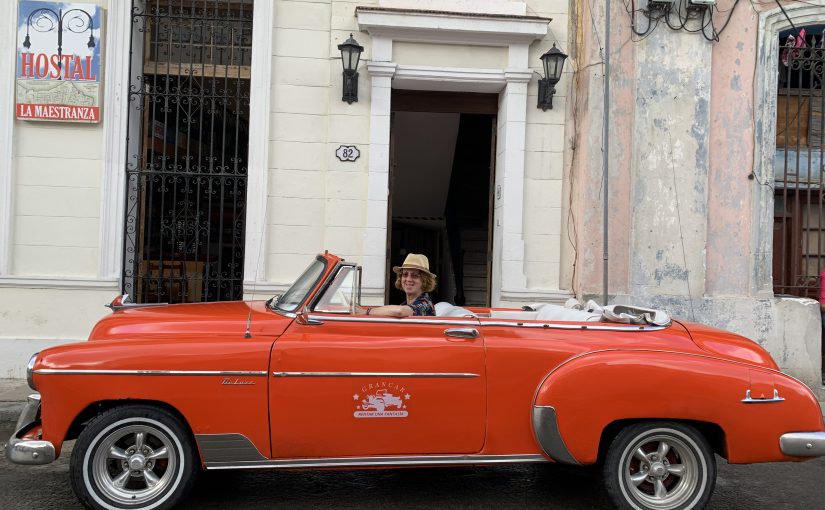I’ve never been anywhere as different as Cuba before. The first hint of difference came at the airport in Mexico as I queued to check in for my flight and looked around at all the other passengers and the luggage they were checking in –

Each family had about fifteen large bags, some so heavy that two people had to work together to drag them across the floor. Had these people never heard of travelling light? It wasn’t until I got there and saw all the shortages for myself that I realised these people are bringing things in for family and friends that just aren’t available in Cuba. The customs rules allow everyone to bring in an extra 1,000 pesos (equivalent to $1,000 US) of goods in addition to their 25 kg baggage allowance – plus books, sheet music, prosthetic limbs and 10 kg of medicines per person – in addition to that 1,000 pesos … this is a country that needs stuff.
Shops are another eye opener. There are thousands of shops for tourists selling souvenirs, but very few shops selling anything useful … or anything edible. If you want to eat, you need to go to a restaurant, run for tourists.
Our guide took us to a ration shop –

and explained that every Cuban family has an allowance of basic food that they can buy every month at a special cheap price at the ration shop.
A woman coming out of the shop showed us her family’s ration book, where the family members are all named and the products available are listed – rice, beans, oil, salt, coffee, sugar, jam, matches (presumably to light their cigars) … not exactly a varied and exciting diet –
If you don’t use your monthly ration you lose it, and anything else that you want has to be bought at the more expensive, and very scarce, local food shops.
We went into one shop to buy water, and nearly all the shelves were bare – and no photography allowed.
Other shops had one or two things for sale, and I tried to take a few discreet photos –
The butcher’s …

The baker’s …

There were no candlestick makers.
Where shops had full shelves, they were usually full of just one thing –

A bit tough if you don’t like pineapple juice.
And there were queues outside the better-stocked shops –

Ironically, when I took this photo in early March, I had never seen a queue outside a supermarket in England – how things change …
And the large duty free shop at Havana airport has several very long, well-stocked aisles, but the only two things on these laden shelves are rum and Pringles … why Pringles? And they aren’t even that cheap. And all the other aisles in the duty free are empty.
But lack of ‘stuff’ is also what gives Cuba its uniqueness; if you can’t replace things, you hang onto them.
I went for a ride in a 1950 Chevrolet –

And the driver explained that if anything minor goes wrong, he fixes it himself, but he has a very good mechanic to deal with trickier problems.
He pays $750 dollars a month to rent the car, and then charges $40-50 for a city tour. There are a lot of these cars around and competition is fierce, so I hope he manages to earn enough to support his family.
Old cars aren’t reserved for tourist taxis – they’re everywhere –
And it’s not just old cars that are still in daily use.
There are some wonderful old bikes –

Horses pulling carts are a common sight in every town –
Or horses without carts –

This tamale seller is using his bicycle as a mobile stall –

and if you want to till your fields, you need to get yourself a couple of bullocks … and make them each a muzzle to stop them snacking on the crops as they work –
For the tourists, Cuba is a wonderfully quaint and picturesque holiday destination. But for the locals it must be a frustrating daily grind … a permanent state of Make Do and Mend, on a diet of rice and beans.

















